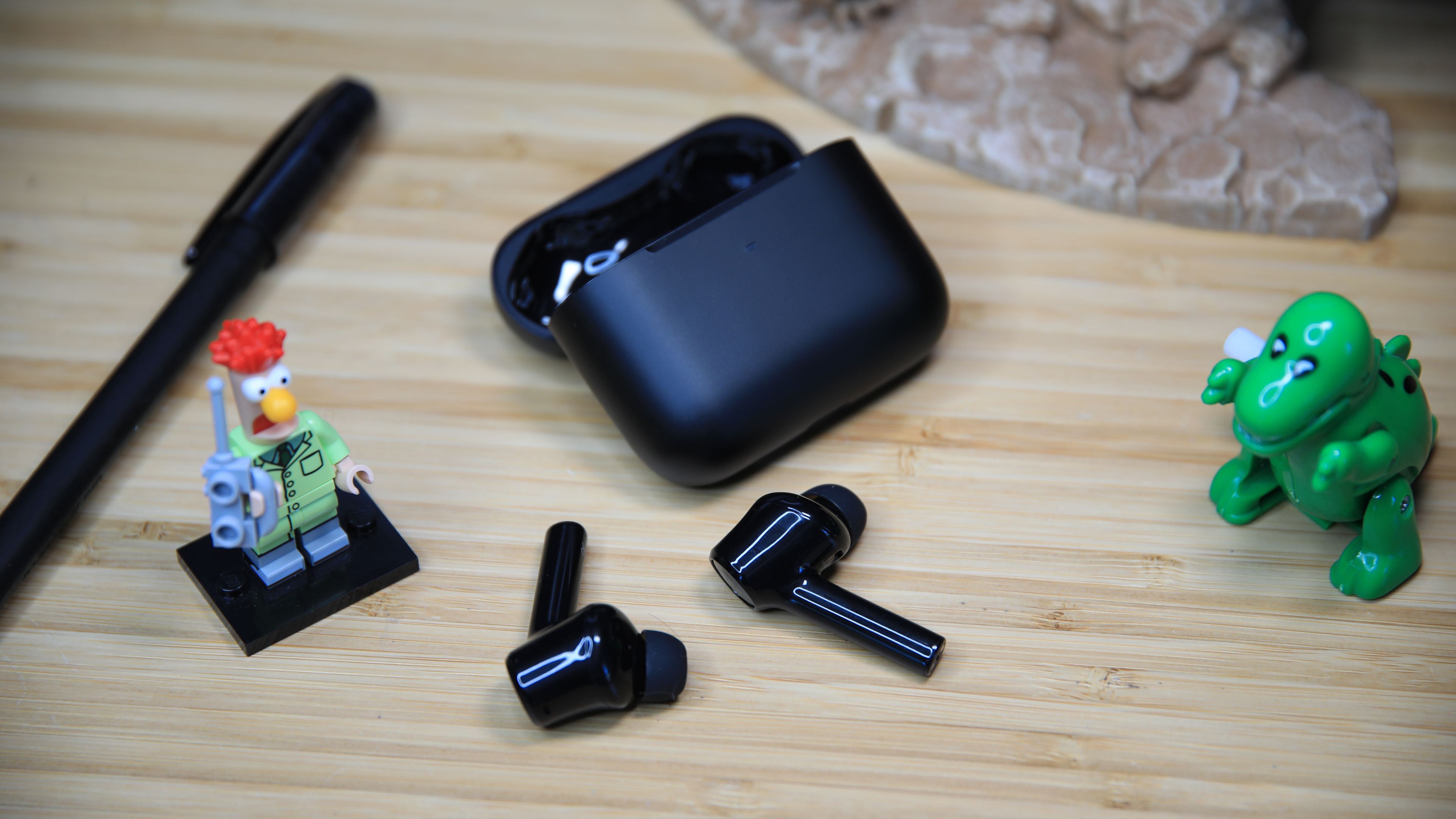
Gaming earbuds burst onto the scene in the wake of Apple’s successful AirPods. It was hardly a surprise: the AirPods made earbuds cool and, in turn, made the thought of gaming on earbuds appealing. But earbuds face several challenges, such as Bluetooth latency, lackluster microphone quality, and a limited sound stage.
Razer’s Hammerhead Pro HyperSpeed earbuds attempt to counter these problems with a fast, proprietary wireless connection, strong audio, and a few gaming-centric software features, but it’s only a partial success.
Specs
Design and Comfort of the Hammerhead Pro HyperSpeed
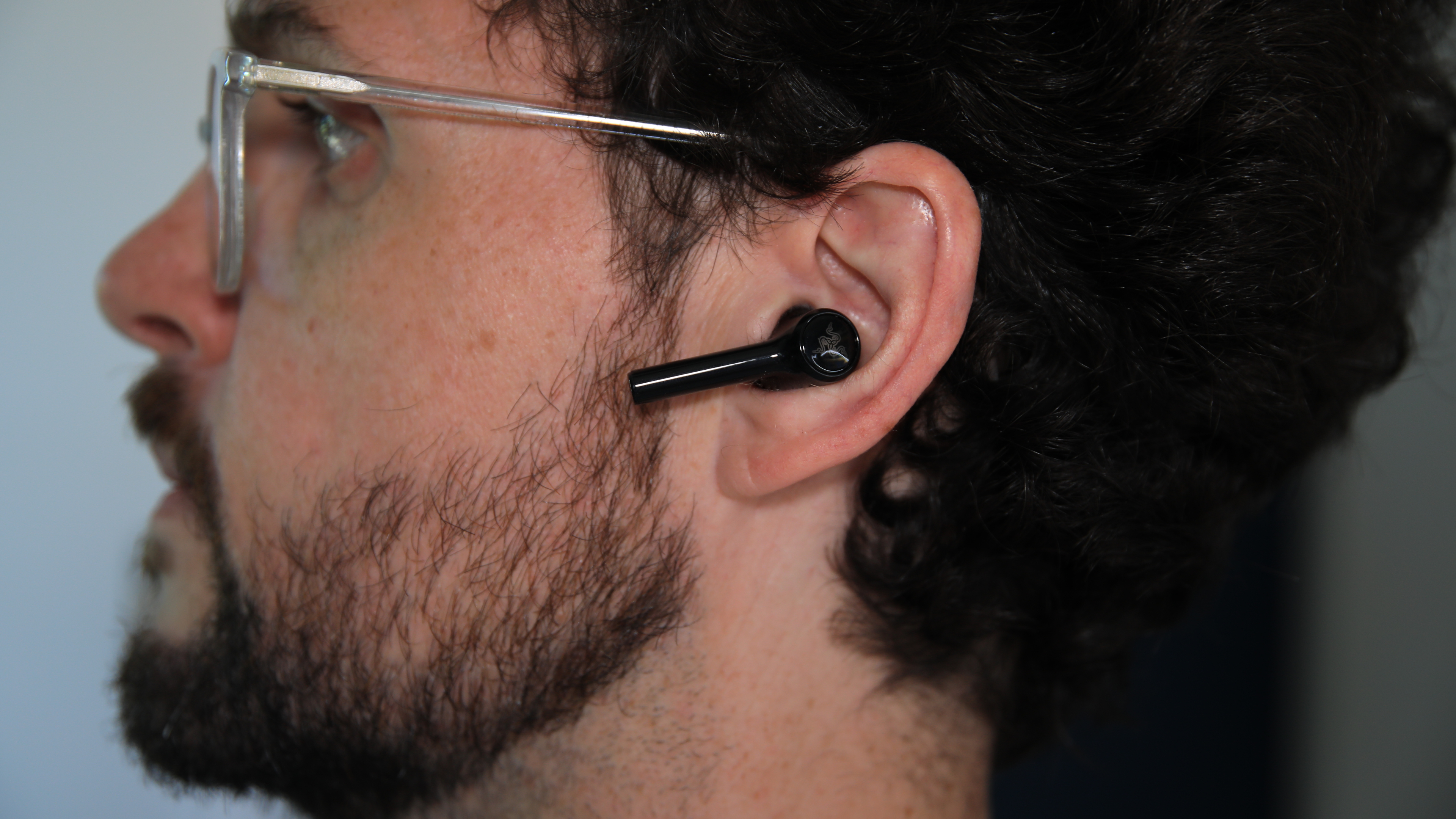
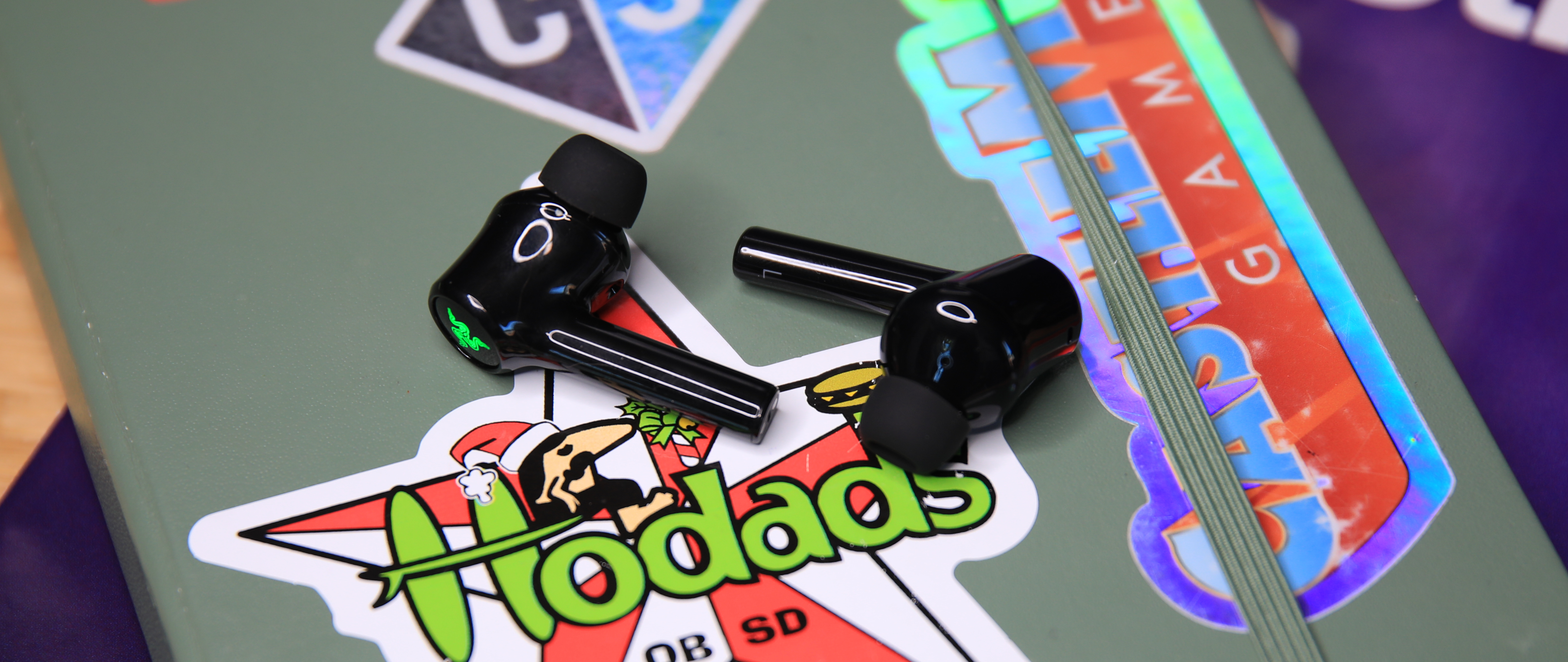

Razer’s Hammerhead Pro HyperSpeed earbuds opt for a stemmed design that will look familiar to anyone who’s seen a pair of AirPods. These days it looks a bit old-fashioned, as many brands have swapped to a more compact, stemless design.
Plastic is the material of choice. This is no surprise: nearly all earbuds are made of plastic. Still, Razer’s earbuds appear more plastic-y than do many competitors’, and feel a bit cheap as a result. The earbuds' piano black gloss finish contributes to this problem. Black gloss isn’t in fashion at the moment, and for good reason: it attracts lint, fingerprints, and earwax like a magnet.
What the earbuds lack in looks, they make up for in comfort. This, of course, is subjective based on the shape of each user’s ear, but I found the earbuds comfortable to use for several hours at a stretch. The stemmed design eventually caused fatigue due to how the stems press slightly into my ears, but the problem was no worse than any other stemmed design I’ve tried, and a short break improved comfort considerably.
The Hammerhead Pro HyperSpeed earbuds come with three earbud tip sizes: small, large, and medium. I used the medium size, which is typical of most earbuds I use. They’re made of a soft silicone material — standard for most earbud tips.
The earbuds support Razer’s Chroma RGB lighting with LEDs placed behind the Razer logo on each earbud. I don’t personally care about this feature, and there are obvious limits to the flair tiny earbuds can add to your setup. Still, the RGB lighting customization worked well in response to input on the Razer Audio App, and the LEDs are bright enough to easily see in a lit room.
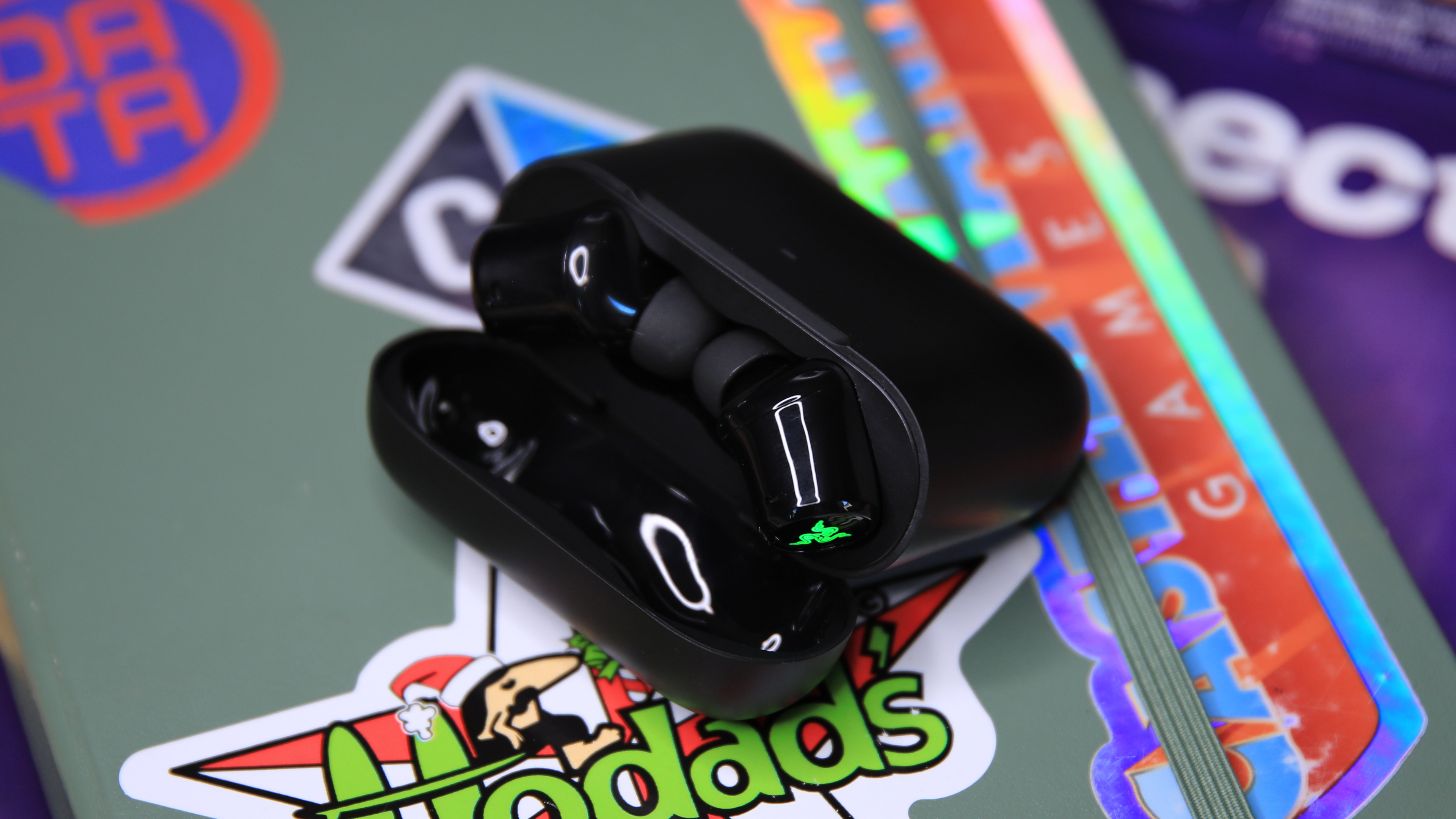
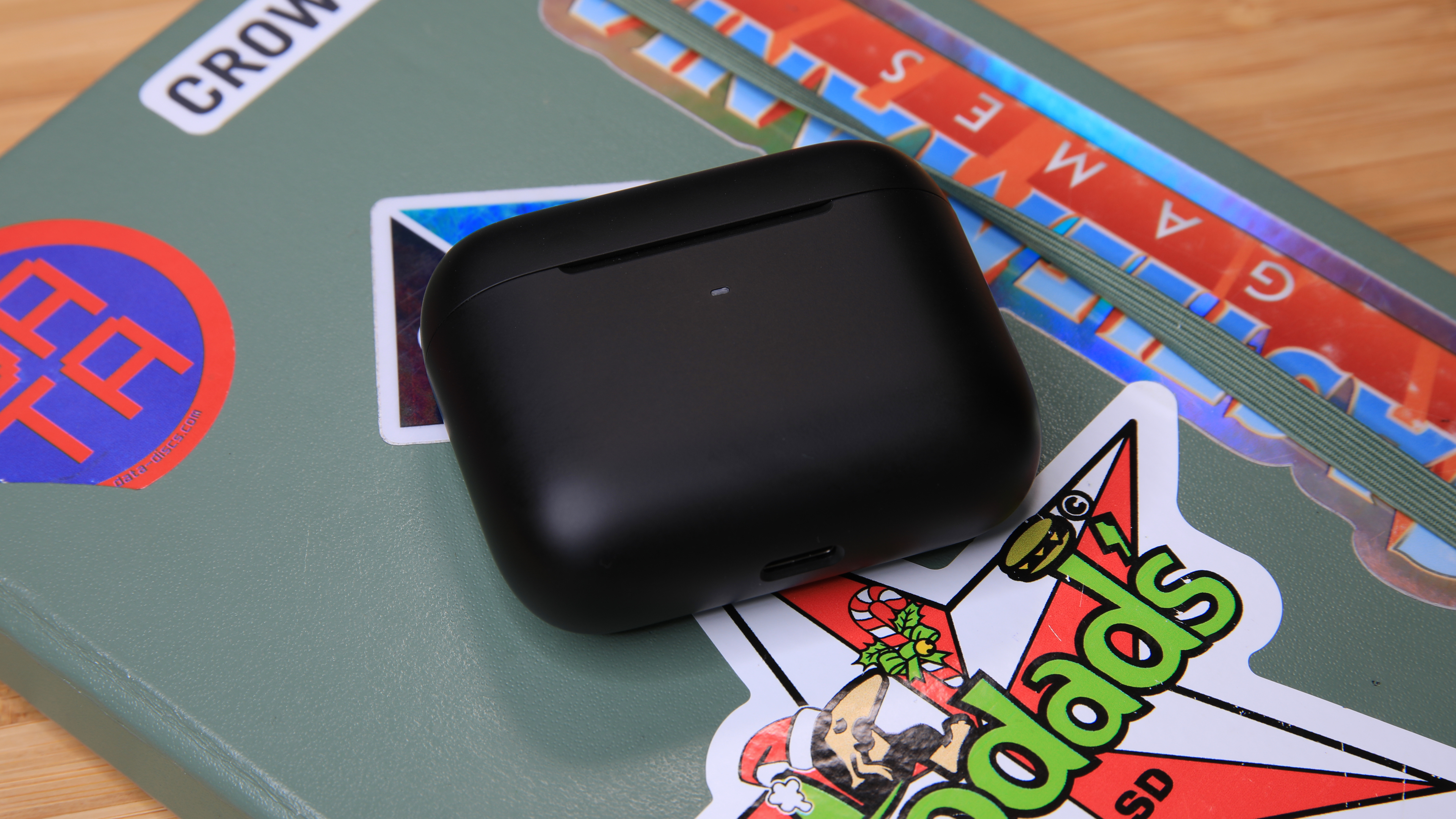
One additional accessory lurks in the box: a 2.4GHz wireless “HyperSpeed” adapter, which you’ll need to connect the earbuds over 2.4GHz wireless instead of Bluetooth 5.3. The adapter has a USB-C connection, but a handy USB-A adapter is provided, too.
Audio Performance of the Hammerhead Pro HyperSpeed
Razer packs 10mm drivers into the Hammerhead Pro HyperSpeed earbuds and slaps on the THX certified label, but the company’s claims about audio quality are otherwise vague. This set modest expectations for audio quality which, fortunately, were exceeded — though I found the earbuds performed better for listening to music rather than for playing games.
The earbuds have a strong, voluminous character that often did justice to tunes. Taylor Swift’s Anti-Hero was thick, even viscous, with great separation between Swift’s crystal clear vocals and the hum of the bassline underneath. I noticed a similar effect in Boards of Canada’s New Seeds, a complex but purely instrumental track which interrupts its grainy midrange and hypnotic bassline with a shrieking electronic siren’s call halfway through. The Hammerhead Pro HyperSpeed earbuds achieved a good sense of depth and separation that encouraged my feet to tap along with the beat.
It wasn’t all good. Yves Tumor’s Echolalia and DJ Shadow’s Nobody Speak had issues with a muddled midrange and indistinct vocals. While these tracks are very different, they share lower, more monotone vocals that stick behind the bass. But while this issue was noticeable, it didn’t ruin the experience.
Loading up a title like Cyberpunk 2077 or Diablo IV made it obvious the indistinct midrange was caused by bass that was turned up a bit more than the earbuds’ drivers can handle. Highs and lows had good distinction and were spatially separated, but details in the midrange — vocals and dialogue, in particular — were snowed under.
The earbuds' strong highs and lows carried through to the gaming experience, and sounded especially good in those with great music — the tunes of Final Fantasy XIV’s zones and dungeons were a treat.
As for surround: 5.1 or 7.1 surround is not an option, so you’re limited to stereo. A Dolby sound test video showed the earbuds provided good stereo reproduction with distinct left, right, and center channels, but rear and height channels weren’t true to life. This was not unexpected given the specifications. And, to be fair, the Hammerhead Pro HyperSpeed performed better than many earbuds I’ve encountered. Just don’t expect the 360-degree aural experience found on some price-competitive gaming headsets.
Microphone of the Hammerhead Pro HyperSpeed
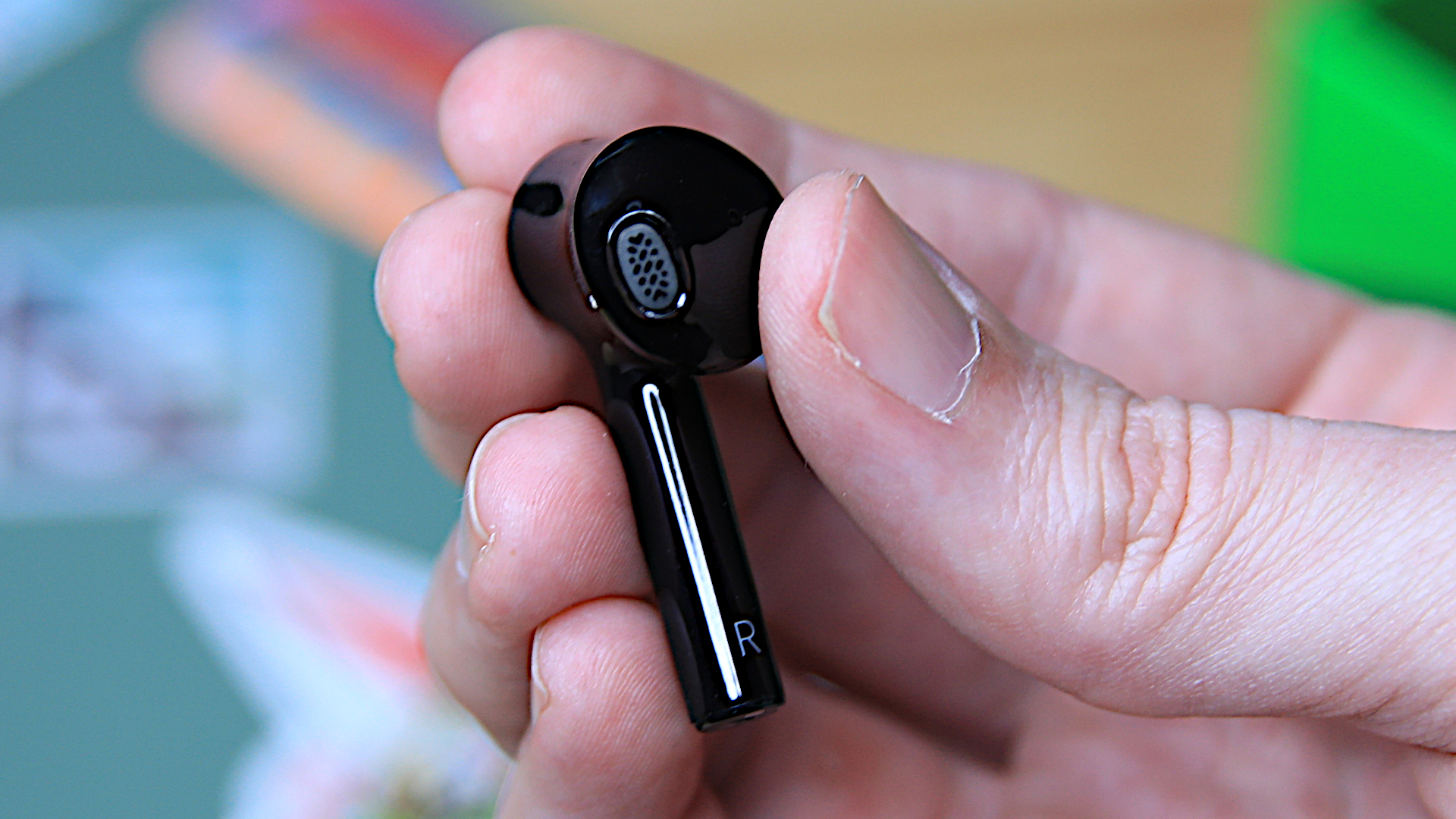
The Razer Hammerhead Pro HyperSpeed has a fixed microphone, which is true of all earbuds. There’s no option to mute the microphone on the earbuds, though; it can only be silenced using software on a connected device. The earbuds include tap controls for receiving calls and increasing/decreasing the volume of calls, but no controls for increasing or decreasing the volume of the microphone.
Audio quality from the microphone was strong — especially for earbuds. Your friends on Discord shouldn’t have trouble hearing you. While the sound could be a bit muffled, it preserved a bit of depth and bass and avoided the tinny, metallic quality often found on inexpensive microphones.
Ambient noise might be an issue, however. The microphone has noise canceling, but its physical location means it’s more likely to pick up nearby sounds. Even the tip-tap of a keyboard or click of a mouse came through in my testing. In short, plan on using push-to-talk — your friends are not going to be pleased if you roll with an open mic.
Features and Software of the Hammerhead Pro HyperSpeed
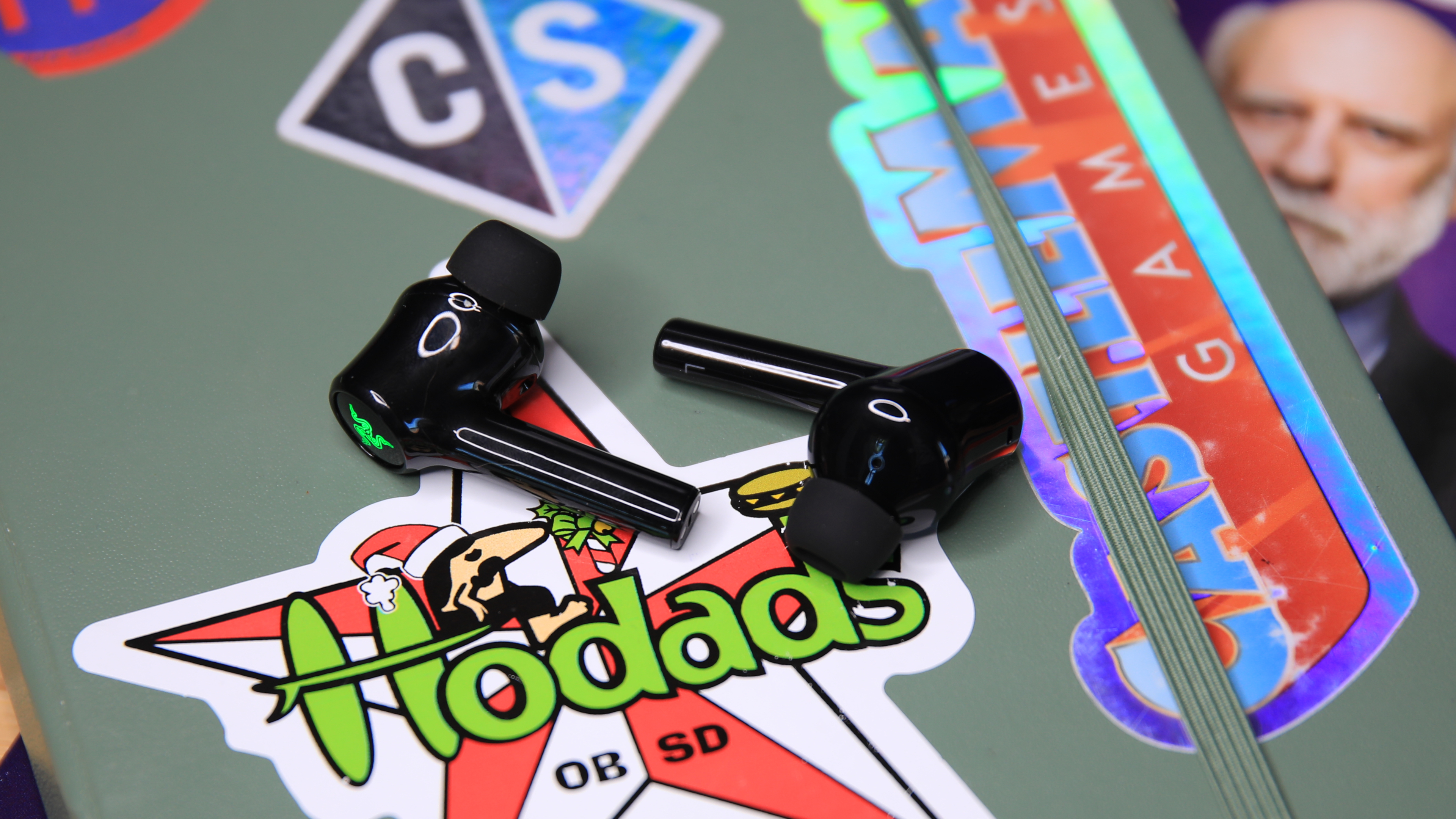
Razer’s Hammerhead Pro HyperSpeed offers the features typical of most wireless earbuds — and then some.
The earbuds can pair with up to two devices: one over Bluetooth 5.3 and one over Razer’s HyperSpeed 2.4GHz wireless. The low-latency HyperSpeed connection pairs with a dongle that’s included in the box, so it’s best for use with a PC or game console. To be honest, I could not detect any difference in latency between Bluetooth and HyperSpeed, but I did notice the HyperSpeed connection was stronger, allowing me to receive audio anywhere in my home. The Bluetooth connection cut out once I was a few rooms away, which is typical for Bluetooth audio devices in my home.
Active Noise Cancellation (ANC) is included and offers three modes: ANC on, ANC Off, and Ambient. Razer’s ANC is unremarkable but functional. Low, repetitive noises, like a fan or air conditioner, were easily filtered away, but noises of a higher pitch, or irregular frequency, crept in. It’s not as good as what you’ll find on Apple’s AirPods Pro but still delivered a big decrease in ambient noise.
Ambient Mode failed to impress. It allowed clear, balanced sound to pass through, which was handy if someone pops in for a chat while you’re gaming. Unfortunately, it was accompanied by a distracting ambient hum, and some unpleasant or distant noises were significantly amplified. The roofers working on a house a block away suddenly teleported to my doorstep with Ambient mode turned on.
The ANC and Ambient Mode are joined with a layer of gamer-specific features, which include Gaming Mode (which blocks incoming calls when gaming over the HyperSpeed connection), customizable controls, and, of course, customizable lighting.
Most features are controlled through the sleek, attractive Razer Audio App, but some (such as ANC and Gaming Mode) also respond to a quick tap (or two, or three) of the earbuds. The app handles remapping of these controls, which is useful if you like a particular feature and crave easier access.
I found the app quick and easier to use than the tap controls, however. Swiping open my phone to turn a feature on or off was much easier than remembering the exact finger-waggles and taps needed to achieve the same thing on the earbuds.
Battery Life of the Hammerhead Pro HyperSpeed

The earbuds stash in a rounded charging case that’s extremely similar to Apple’s AirPods Pro — but in black instead of white. Razer wisely went for a matte finish on the charging case, so the fingerprints and grime that plague the earbuds are less apparent on the case itself. You can top off the charging case over USB-C or use a wireless charging pad.
Razer claims battery life is between 3 and 6 hours, depending on whether the lighting and ANC features are on or off. The charge case provides an additional 11 to 24 hours. That puts Razer behind the most popular wireless earbuds, like the Sony 100XM4 and Jabra Elite 3, and might be an issue for gamers who like to grind all day long.
I typically play for no more than two hours at a stretch, though, so I only heard the low battery warning when I specifically didn’t charge it after use. In my tests, the earbuds managed almost four hours with lighting and ANC turned on.
Razer doesn’t get into specifics about charging speed, but the (optional) charging pad designed for use with the Hammerhead Pro HyperSpeed supports 10 watts of power, which suggests the earbuds receive at least that much when charged over USB-C. In my testing, the charging case received a full charge in roughly and hour and 30 minutes.
The Hammerhead Pro HyperSpeed’s overall battery performance is average but acceptable. Gamers who play all day will need to take a break to charge the earbuds — but that’s true if you’re using Razer’s competitors, too.
Bottom Line
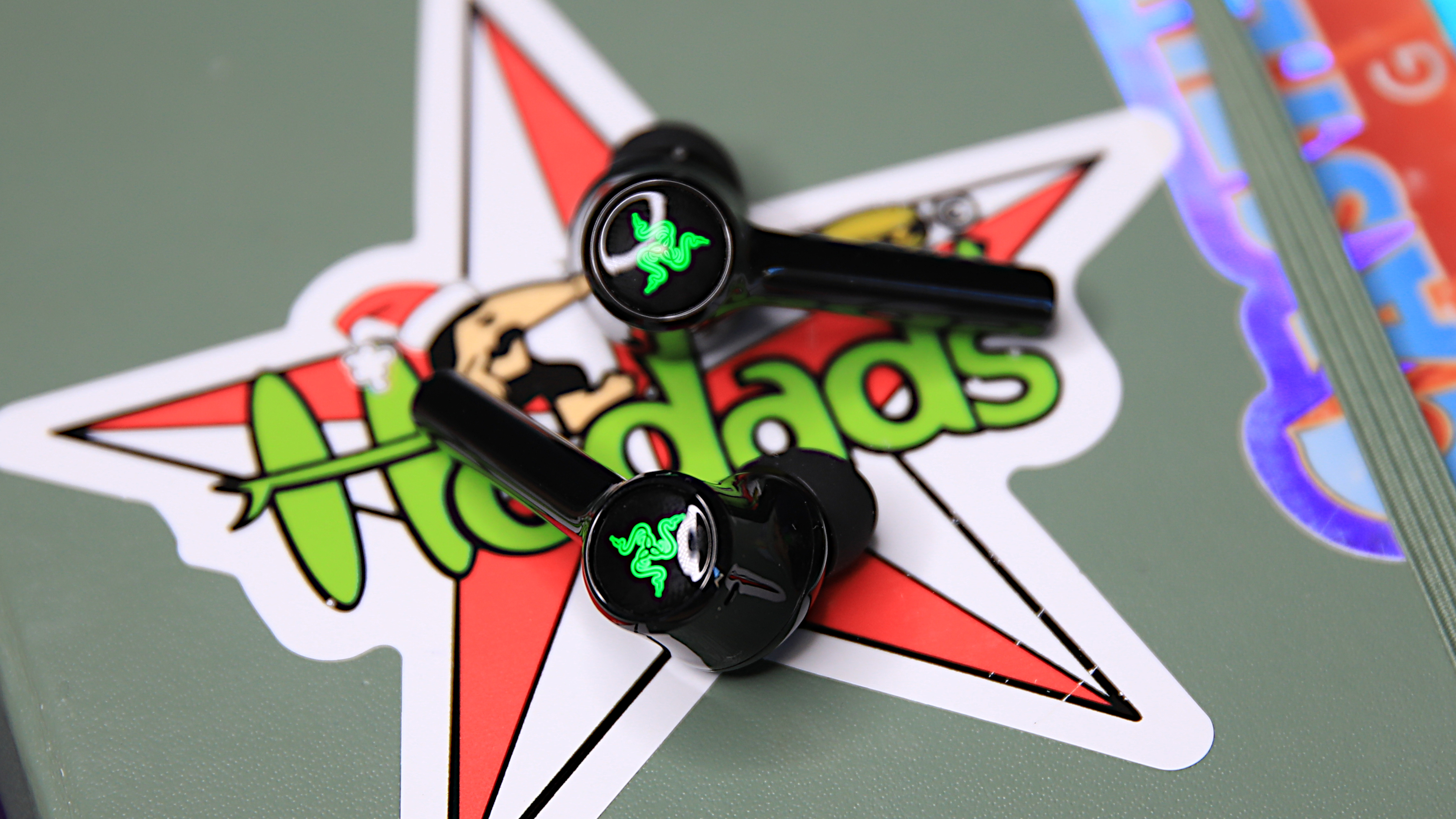
Should gaming earbuds even be a thing?
That’s the question raised by Razer’s Hammerhead Pro HyperSpeed. They’re a decent set of earbuds. Audio quality is good, ANC is functional, and the combination of Bluetooth and low-latency 2.4GHz wireless makes for easy connections with a wide variety of devices.
Yet fundamental problems remain. The Hammerhead Pro HyperSpeed can’t provide the sonic oomph of a gaming headset, the microphone can’t filter out all ambient noise well enough to be left to its own devices, and the lack of virtual surround sound is notable.
I can imagine scenarios where these earbuds make sense. Perhaps you’re a mobile gamer and just want to play on a smartphone, or you have multiple devices and appreciate the earbuds’ flexible wireless connection options.
But the key issue is this: a lifestyle gaming headset such as Razer’s Barracuda Pro Wireless handily outperforms the Hammerhead Pro HyperSpeed in games (and music, and movies, and on Discord), and still gives you the device freedom you’re craving. Razer’s earbuds are decent value for a niche but difficult to recommend.







